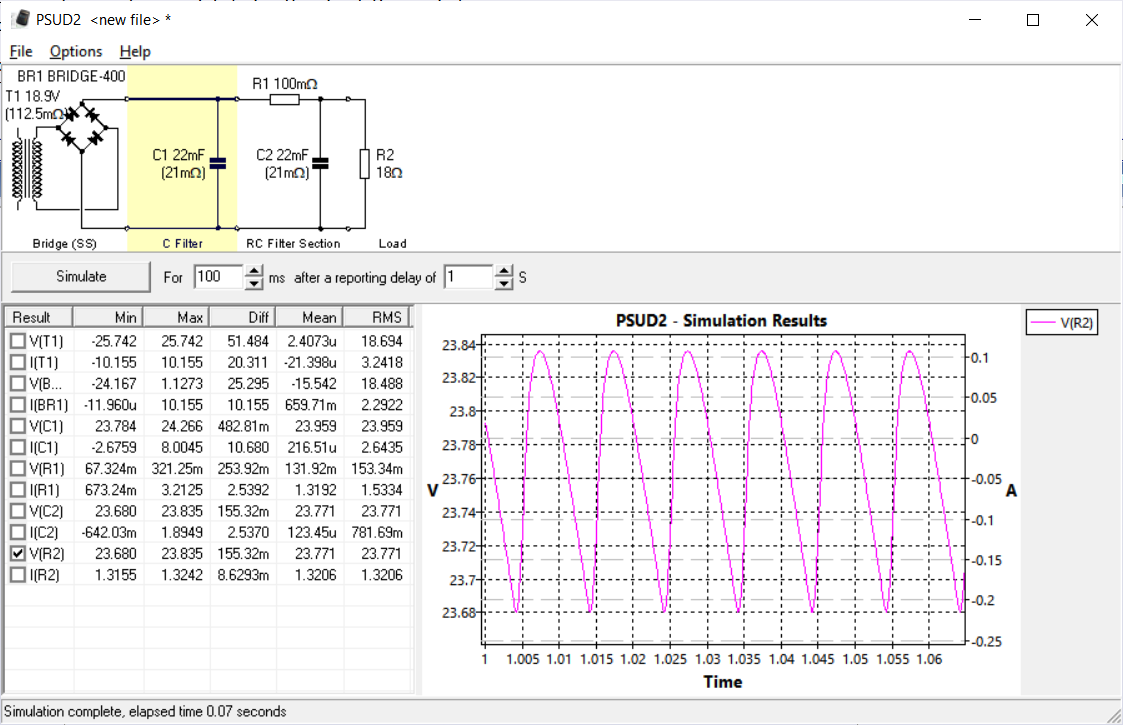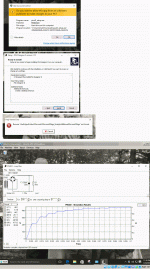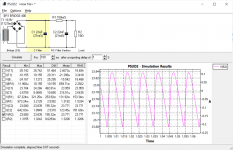I poked a little and could not figure where PSUD was writing a file *on opening* (as you imply). I would think it might have an options file but I did not see anything. We may need Duncan's advice.
But I done enough PC support to know the O/S and the privileges would be the first step, so me asking saves him a step.
You still have not said WHICH Windows. Win7 does things one way. I hear Win10 does many things different.
But I done enough PC support to know the O/S and the privileges would be the first step, so me asking saves him a step.
You still have not said WHICH Windows. Win7 does things one way. I hear Win10 does many things different.
> Don't like to run apps that require admin privileges as that may open up a can of worms.
Gotcha. But Windows can be such a fuss-pot. The question may be: do you need Admin just to *install* or every time you *run*? It is reasonable to require adult supervision to install software. Once admin-installed it should run for ordinary users.
I don't have Win10 here so I'm just stirring the pot until a Win10-guru comes by.
Gotcha. But Windows can be such a fuss-pot. The question may be: do you need Admin just to *install* or every time you *run*? It is reasonable to require adult supervision to install software. Once admin-installed it should run for ordinary users.
I don't have Win10 here so I'm just stirring the pot until a Win10-guru comes by.
Lots of programs require "admin" access on every launch. CPU-Z is a good example. Windows makes it possible to ruin your system by clicking on a bad URL, so I wouldn't worry about running things with elevated privileges. If you really care run Linux instead of Windows, and use PSUD under Wine.
> "admin" access on every launch. CPU-Z
CPU-Z puts its fingers into the PC's most intimate parts. It does not directly find places to breech, but the info it returns could help a hacker, and is NOT generally needed by "users" (typists, accountants, surfers...).
PSUD is a "calculator", and should not be poking the system's secrets. Win10 changed some of those secrets which means some old code run afoul of Win10's security(?). Win10 redirects the most common things (INI files in executable directory) but PSUD is probably unknown in Redmond.
I lied. I do have a "Win10" here. But it is emulated, it is slooow, it is years behind on patches, it has forgotten it is Valid... I proved an Admin can install and run PSUD with one stupid error, but I think we knew that. Without forcing a Validation I can't make a non-Admin user to play with, so fug-it.
CPU-Z puts its fingers into the PC's most intimate parts. It does not directly find places to breech, but the info it returns could help a hacker, and is NOT generally needed by "users" (typists, accountants, surfers...).
PSUD is a "calculator", and should not be poking the system's secrets. Win10 changed some of those secrets which means some old code run afoul of Win10's security(?). Win10 redirects the most common things (INI files in executable directory) but PSUD is probably unknown in Redmond.
I lied. I do have a "Win10" here. But it is emulated, it is slooow, it is years behind on patches, it has forgotten it is Valid... I proved an Admin can install and run PSUD with one stupid error, but I think we knew that. Without forcing a Validation I can't make a non-Admin user to play with, so fug-it.
Attachments
I did a test compile last night (after familiarising myself with the slightly different world of the Mac), and the news is positive. I got a simulation to run, but the screen looks ugly and there are loads of things in the background that don't work properly.
Hopefully have something fit for public consumption in a couple of weeks.
Duncan:
Any updates?
Regards,
Scott
Duncan:
Any updates?
Regards,
Scott
As mentioned previously, it runs fine under Wine ('cept I get no help files) on my MacBook Pro with High Sierra.
Not saying a Mac specific version wouldn't be appreciated, but it's not a deal breaker.
As mentioned previously, it runs fine under Wine ('cept I get no help files) on my MacBook Pro with High Sierra.
Not saying a Mac specific version wouldn't be appreciated, but it's not a deal breaker.
prairieboy:
Yes, I get it. But Duncan wrote that he has purchased a Mac and had had some success in his initial port of PSUD. As quoted in my last post, Duncan also stated, about 8 weeks ago, that he hoped to have something available for the Mac-using community in a few weeks' time. If he's close to releasing it, I'd prefer to wait for his release than mess with Wine.
Regards,
Scott
prairieboy:
Yes, I get it. But Duncan wrote that he has purchased a Mac and had had some success in his initial port of PSUD. As quoted in my last post, Duncan also stated, about 8 weeks ago, that he hoped to have something available for the Mac-using community in a few weeks' time. If he's close to releasing it, I'd prefer to wait for his release than mess with Wine.
Regards,
Scott
Hi Scott, I've had PSUD2 working on the Mac for some weeks, just need to get the help working as it looks into the .app bundle for the info. Should get something out this weekend.
Regards,
Duncan
Installed PSUD2 off the Duncanamp webiste.
Unfortunately, when I try to run the program, a psud2 error window pops up indicating "Invalid filename". There's an option to ignore the error and selecting that results in another psud2 error window saying "Access violation". Anyone else having this problem and know how to get around it?
Does anyone know where to find a copy of the previous version so I can use that while trying to fix the problem with the recent release?
Thanks!
I can send you a previous version but I know for an absolute fact it will make your problems worse, not better. Windows 10 has been tightening up security left right and centre around what applications can and cannot do with minor, and some not so minor changes. Windows 10 sends out updates every Tuesday and I'm behind on following their changes.
To be fair to Microsoft, they have been preaching for years (or even decades) about how to write apps to fit the Windows model. PSUD2 dates back to the late 90s so has been around in pretty much the same guise for over 20 years - it doesn't fit the MS way of doing things.
PSUD3 brings us into the 21st Century, however it's nowhere near even an Alpha test at this point in time, so that's no help to anybody...
I'm putting through a number of changes for PSUD2 to work on the Apple Mac this weekend, at the same time I'll audit all the things that are screwing up Windows 10 so hopefully will have a more "W10 friendly" version by tomorrow night.
You shouldn't need admin rights to install or run the software, unless you are using a company machine that has Windows policies set to prevent installs by non-admins (nothing I can do about this, sorry!)
Regards,
Duncan
To be fair to Microsoft, they have been preaching for years (or even decades) about how to write apps to fit the Windows model. PSUD2 dates back to the late 90s so has been around in pretty much the same guise for over 20 years - it doesn't fit the MS way of doing things.
They are finally forcing software to do it the Linux/Unix way. User's should never have write access to system files. Although Windows itself and many programs are still confused about the whole idea of a writable home directory for your config files and documents. At least the home directory has finally settled down in C:\users\<username> (they still have to destroy it with the stupid virtual Documents folder, though). Can't believe how difficult it has been.
Maybe time for a Linux version soon? Many, but maybe mostly pro computer users, have migrated to Linux. I've been running Linux only at home for 15 years soon. At work I use both. There are multiple cross-platform toolkits available and more are coming. Btw, PSUD2 works great in wine on Linux.
They are finally forcing software to do it the Linux/Unix way. User's should never have write access to system files. Although Windows itself and many programs are still confused about the whole idea of a writable home directory for your config files and documents. At least the home directory has finally settled down in C:\users\<username> (they still have to destroy it with the stupid virtual Documents folder, though). Can't believe how difficult it has been.
Maybe time for a Linux version soon? Many, but maybe mostly pro computer users, have migrated to Linux. I've been running Linux only at home for 15 years soon. At work I use both. There are multiple cross-platform toolkits available and more are coming. Btw, PSUD2 works great in wine on Linux.
Hi Johan, I'll do a Linux version - that's the easy bit - it's the packaging that becomes a challenge, but that's something I need to get to grips with.
I use Ubuntu (Debian based) so that will probably be what comes out first followed by RHL...
Regards,
Duncan
Hi Johan, I'll do a Linux version - that's the easy bit - it's the packaging that becomes a challenge, but that's something I need to get to grips with.
I use Ubuntu (Debian based) so that will probably be what comes out first followed by RHL...
Regards,
Duncan
I've packaged a few programs in rpm format for Fedora and RHEL/CentOS, can give some input if you have questions. But I think I would look at flatpak (rather than Ubuntu's variant snap). It is more distro-agnostic. It is perfectly fitted for desktop applications and also proprietary software (check out flathub Flathub—An app store and build service for Linux). If you don't care about Linux distributions' own ecosystems at all, appimage is an alternative.
Instructions for dummies
I just stumble across this great tread and downloaded the software.
I am trying to learn how to interoperate the results. I have no issue with the graphs but I haven't got my head around all the columns in the table.
I understand the Min, Max and Diff columns, but I'm not sure what the Mean and RMS columns relate to. (I know what RMS means).
In my attached example is I(C1) = 3.3229 the RMS ripple current at that point?
In the table where do I see ripple voltage?
Sorry for the rookie questions.
I just stumble across this great tread and downloaded the software.

I am trying to learn how to interoperate the results. I have no issue with the graphs but I haven't got my head around all the columns in the table.
I understand the Min, Max and Diff columns, but I'm not sure what the Mean and RMS columns relate to. (I know what RMS means).
In my attached example is I(C1) = 3.3229 the RMS ripple current at that point?
In the table where do I see ripple voltage?
Sorry for the rookie questions.
Attachments
The numbers are basically to help you work out ripple and average voltage, however it's essential that the power supply is in a steady state for them to be meaningful.
Your simulation starts from 0 seconds and it looks like you have soft start enabled, I would recommend a sim of 100mS after a reporting delay of 1 second to get your ripple and average figures (soft start turned off).
Once you do this, the V(R2) box, the one you are really interested in shows:
Just to expand on Mean and RMS, Mean is simply the average voltage over a period of time. For those reading who are not sure what the RMS means, it is the effective voltage that would provide the same amount of heat in a load. If the ripple is low, the two numbers should be pretty close and the difference will only be of use in some rare cases, like a mains power supply for the an absorbtion fridge in a camper where the output might be a bit rough.
So... to summarise on the columns:

Your simulation starts from 0 seconds and it looks like you have soft start enabled, I would recommend a sim of 100mS after a reporting delay of 1 second to get your ripple and average figures (soft start turned off).
Once you do this, the V(R2) box, the one you are really interested in shows:
- Min 23.680
- Max 23.835
- Diff 155.32m
- Mean 23.771
- RMS 23.771
Just to expand on Mean and RMS, Mean is simply the average voltage over a period of time. For those reading who are not sure what the RMS means, it is the effective voltage that would provide the same amount of heat in a load. If the ripple is low, the two numbers should be pretty close and the difference will only be of use in some rare cases, like a mains power supply for the an absorbtion fridge in a camper where the output might be a bit rough.
So... to summarise on the columns:
- Min: The lowest voltage or current seen at any point during the simulation period
- Max: The highest voltage or current seen at any point during the simulation period
- Diff: Simply Max-Min
- Mean: The average value of the data points with respect to time
- RMS: The square root of the average of the squares of the data points with respect to time
Attachments
Ripple voltage across C1 is 482mVp-p.Can I conclude from the example above, in regards to C1 that the ripple voltage is 482.81mV and the ripple current is 10.68Amps?
Ripple current in C1 is 2.64Arms.
Note that the voltage on C1 has both AC and DC components - as indicated by a voltage across C1 of 24V.
Note also the current through C1 is AC only for that steady state period (after 1 sec delay to provide steady state conditions) - whereas if you had a period starting at 0 sec, then the capacitor current would include a DC component due to the charge up phase of operation.
Thank you both for your assistance.
The software has assited me to understand (simple) power supplies and component specifications.
I am now more confident in selecting capacitors with the correct ripple current rating etc.
I'm aware of the charge current that you mentioned. I usually use a softstart ie two CL60's in series bypassed by a relay after a few seconds.
Also the program allowed me to easily compare a CRC to a CLC power supply and see the difference.
Mr Duncan thank you for your software.
The software has assited me to understand (simple) power supplies and component specifications.
I am now more confident in selecting capacitors with the correct ripple current rating etc.
I'm aware of the charge current that you mentioned. I usually use a softstart ie two CL60's in series bypassed by a relay after a few seconds.
Also the program allowed me to easily compare a CRC to a CLC power supply and see the difference.
Mr Duncan thank you for your software.
Hi Duncanamps,
This is such as awesome tool, thank you!
How do I add the rectifiers from your webpage (ie the VT ones)? ie Can I bulk load by savin the text file from you web page in the right directory or, do I need to create individual files for each rectifier in a text editor?
Thank you!
Andrew
This is such as awesome tool, thank you!
How do I add the rectifiers from your webpage (ie the VT ones)? ie Can I bulk load by savin the text file from you web page in the right directory or, do I need to create individual files for each rectifier in a text editor?
Thank you!
Andrew
- Status
- This old topic is closed. If you want to reopen this topic, contact a moderator using the "Report Post" button.
- Home
- Amplifiers
- Power Supplies
- PSUD 2.10 released

